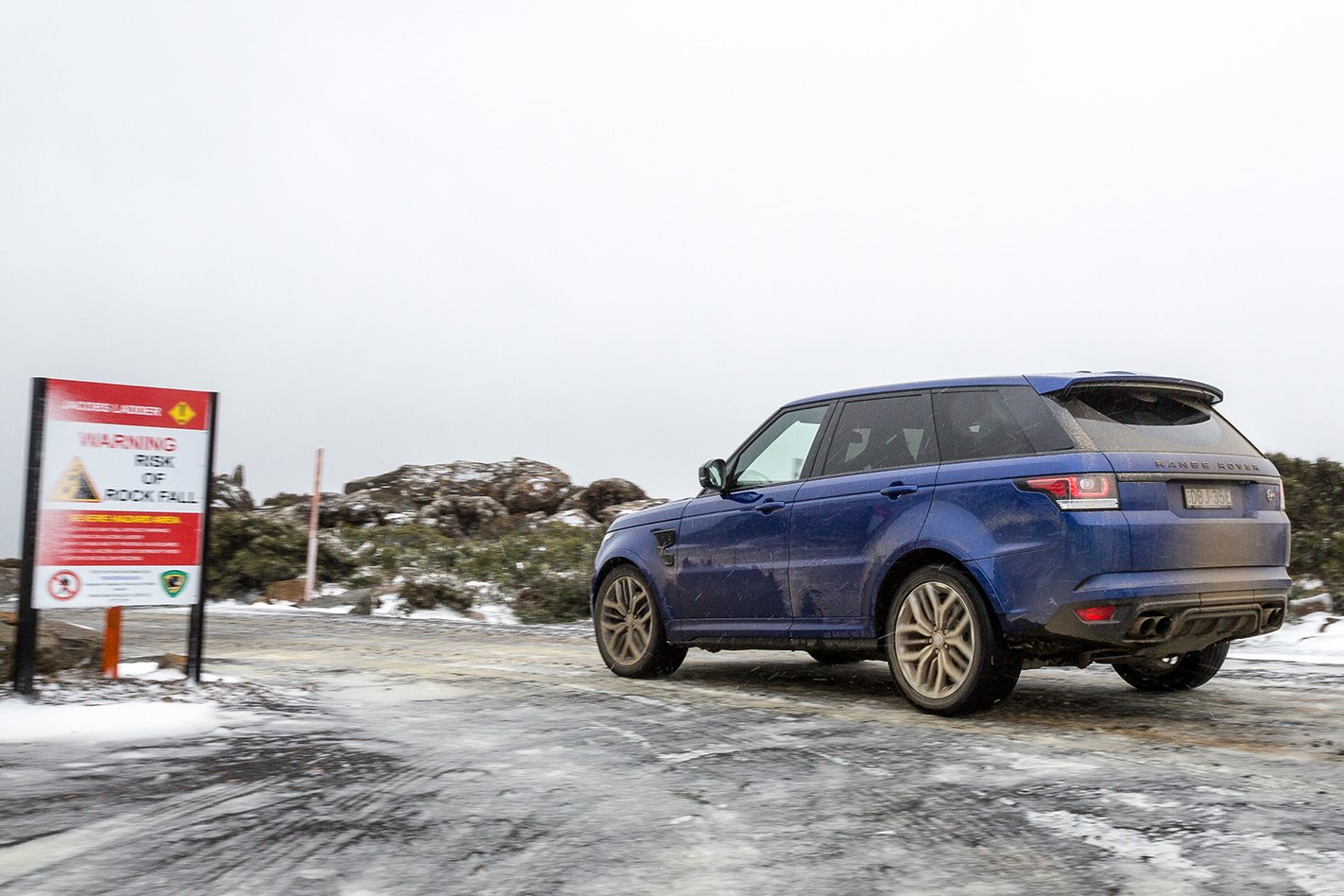I thought heaven would be warmer. Up here among the clouds the mercury reads 1°C, though the wind chill factor feels to drop that by at least 10 degrees, and a thick carpet of ice makes each step a lottery.
To continue photography is to risk frostbite, and every possible heat source in our mode of transport, including the seats and steering wheel, is on maximum in the bid to battle hypothermia.
When Jacob, a patriarch of the Israelites, first had his vision of a stairway to heaven in the Book of Genesis, he didn’t have these problems. Because he was in Israel. Which is in the desert. But for our purposes Jacob’s Ladder is four kilometres of narrow gravel road in Tasmania’s north.
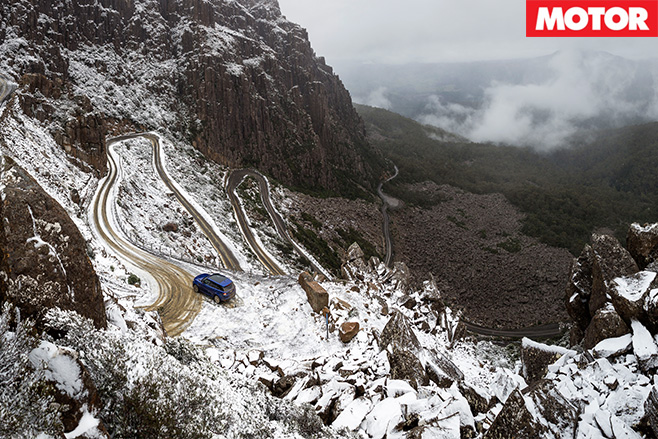
It’s a grey day, the kind of weather that sucks the colour out of everything. Amid such sombre surroundings, the Range Rover SVR’s unique Estoril Blue paintwork is all the more vivid, like someone’s gone overboard with the saturation on Instagram.
It’s an imposing beast, which is only fitting for the first offering from Jaguar-Land Rover’s Special Vehicle Operations, though with the air suspension in its lowest mode it does look a little like it’s collapsed on its springs.
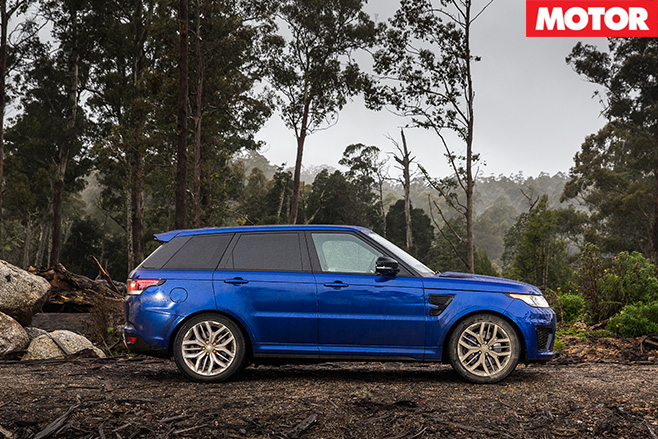
Range Rover calls it “the world’s most capable performance SUV”, able to lap the Nurburgring Nordschleife in 8min14sec yet fjord rivers, clamber over rocks and plough through muddy fields thanks to its low-range gearbox and Terrain Response system.
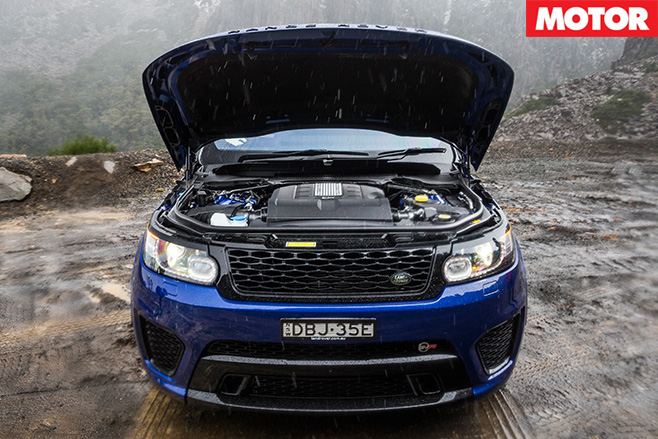
Brilliant driving roads criss-cross the Apple Isle like a cardiovascular system; venture off the main highways and you’re guaranteed to hit a decent set of corners before too long. As such, there are a number of ways to reach the entrance to the Ben Lomond National Park, depending on how much time you have available.
Departing Tasmania’s second largest city, Launceston, the quickest and easiest route is east on the C401. Within minutes the outer suburbs give way to lush green fields and long, sweeping corners ensure the 42km to the turn-off into the forest pass quickly. But there’s a better way.
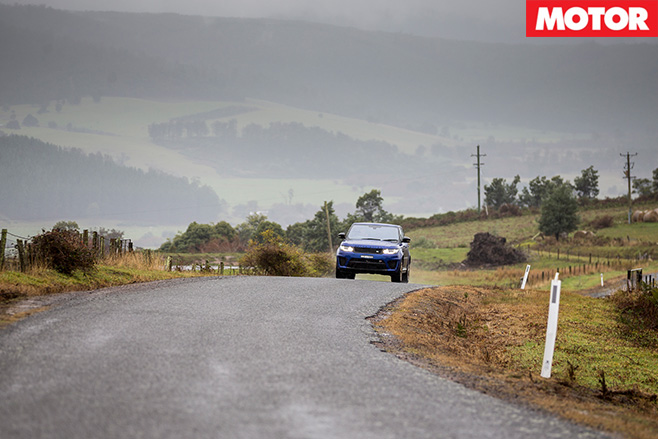
It’s one of Targa Tasmania’s most challenging stages with relentless corners, each one different thanks to constantly changing cambers and the broken road surface. And when it’s wet, as certain sections are now, grip disappears completely.
It’s a stern test of any car, let alone a 2.3-tonne off-roader, and despite its Nurburgring-honed credentials, the SVR struggles. It’s handicapped to a certain extent by its tyres. Range Rover offers enormous 295/40 Continental ContiSportContact5 high performance tyres on 22-inch rims as a $4800 option, but given our planned unsealed adventures it currently wears the standard 275/45 R21 Continental Cross Contacts to lessen the risk of a puncture.
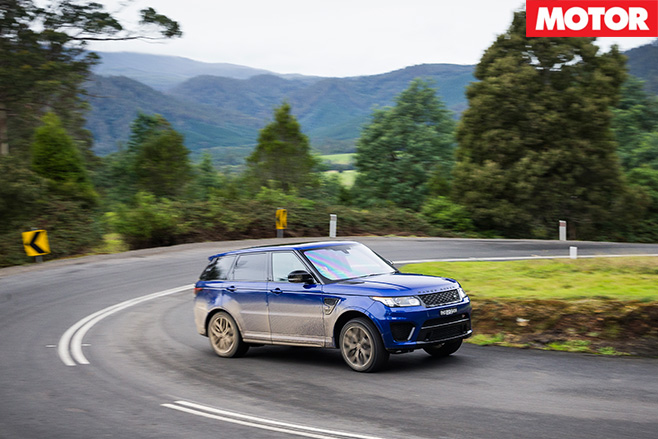
Unfortunately the tyres can’t cope with this amount of power or weight. Even with the suspension stiffened in Dynamic mode there’s significant squat, dive and roll so smooth driving is key.
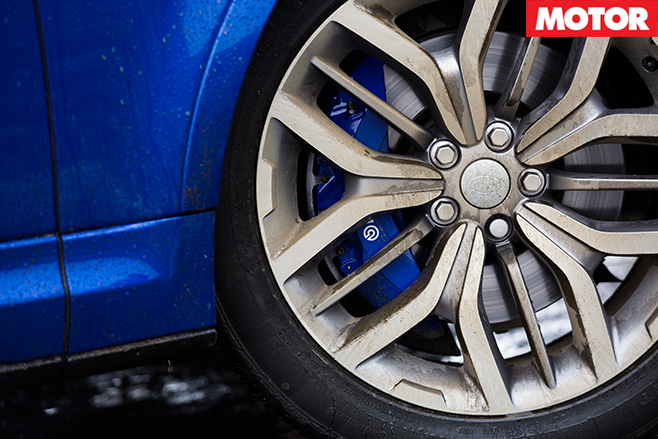
On corner exit a healthy dose of throttle slews the rear end sideways, smearing the tyres across the road. If it’s wet, all four tyres will spin, which makes it interesting trying to guess in which direction the car is going to go next. This might all sound a bit alarming, but to be honest it’s also quite good fun.
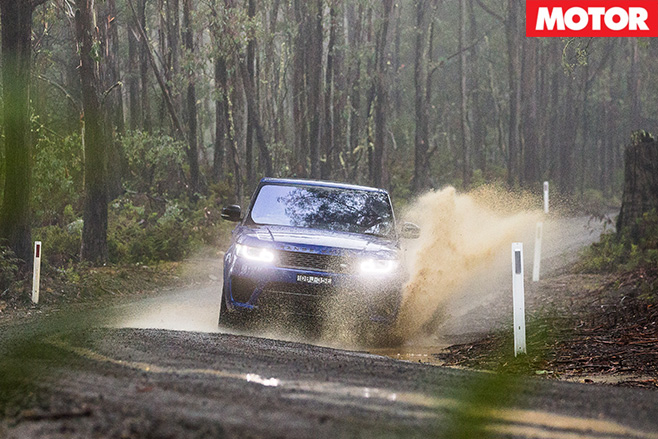
Of course, at the centre of all this is the awesome V8. Throttle response is brilliant, there’s power everywhere and it never sounds anything less than completely anti-social. Range Rover claims a 0-100km/h time of 4.7sec but it feels faster than that, and the overtaking force is brutal. The perfect accomplice to this awesome power is ZF’s eight-speed auto with its smooth, rapid gearchanges.
It’s an entertaining drive, though more for its unruliness than its finely-honed dynamicism. There’s the nagging feeling that this F-Type-spec V8 might be a step too far for this SUV chassis. Perhaps it’s unfair to expect a 2.3-tonne behemoth to shine on a road that would tie many sports cars in knots, but this is “the most dynamically focused Land Rover ever produced”.
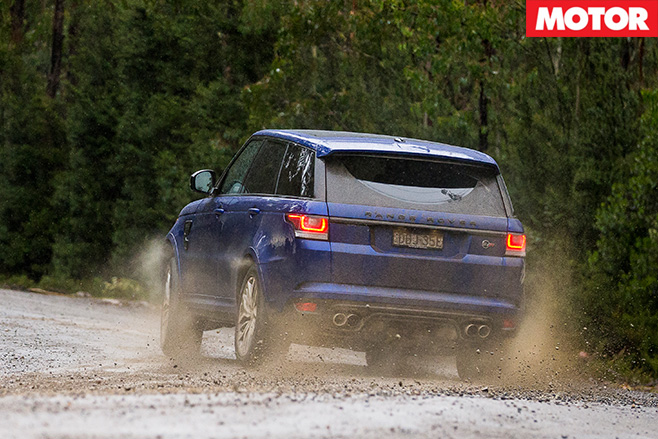
It proves an inspired choice. Wide, fast and well-sighted, Camden Hill Road could’ve been plucked from the route of Rally Finland. The SVR’s high-speed stability on loose surfaces is incredible and the tyres that struggled so badly on wet tarmac are now biting into the damp gravel with relish.
I did some of my first miles in a rally car on roads near here and it’s clear I would’ve finished a lot further up the leaderboard had I been driving a Range Rover Sport SVR. It’s an absolute weapon, absorbing potholes, ignoring ruts and exiting corners in delicious four-wheel drifts. On more than one occasion cows scatter in alarm as the SVR thunders past; if you live in Launceston and your milk is lumpy, blame Range Rover.
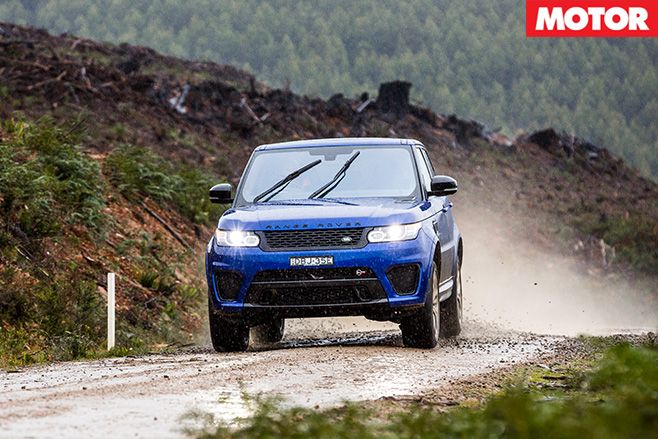
It’s just under 10km to the entrance to Ben Lomond National Park and you’ll need a pass to legally enter, which is best bought online. The road is narrow and well-trafficked, so care is needed, but also smooth enough that any vehicle should manage with little difficulty.
The moment you break above the tree line and Jacob’s Ladder rears into view is guaranteed to induce a sharp intake of breath. It fills the windscreen, while an enormous valley stretches out to your left and massive stone fingers loom from your right, visible through the SVR’s panoramic glass roof.
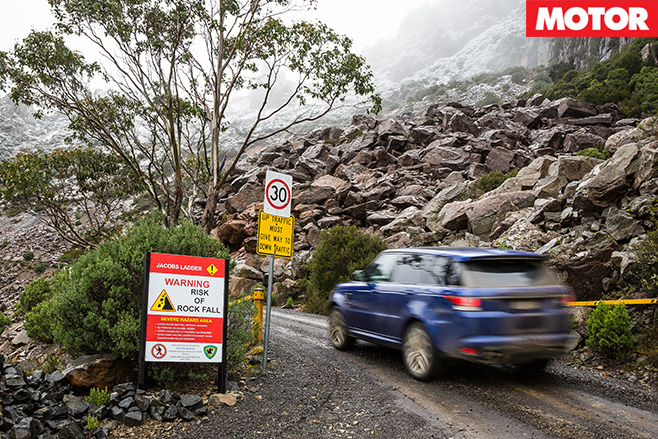
As far back as 1945 the Northern Tasmanian Alpine Club had lobbied the local government to build a road to Ben Lomond, however it quickly became clear any government project would be many years in the making. The NTAC took it upon itself to create a road to Carr Villa Chalet at the base of the mountain, which was completed in 1953, however skiers still faced a 3km walk and 300m ascent to the slopes.
The need for an extension to the summit was clear, and in 1960 Bill Mitchell had the ambitious idea of blasting ‘The Ladder’ into the rock face. A year later, a small government grant allowed road contractor Roy Bugg to begin construction. It took five years for the road to be accessible by a standard car and it was hazardous work.
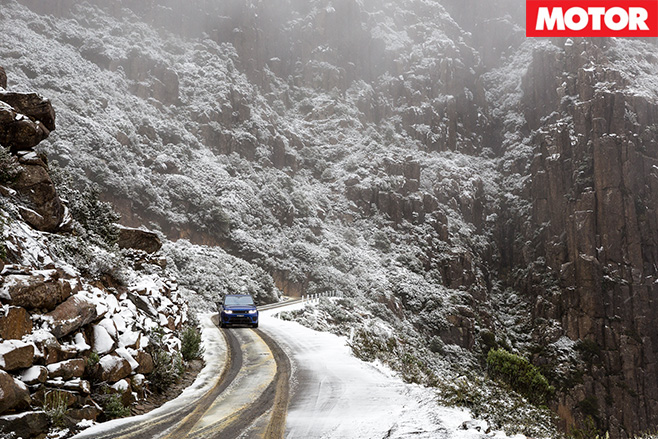
Constant rock falls and inclement weather meant the road required constant maintenance, and in 1974 responsibility for this task was passed from the NTAC to Parks & Wildlife. Jacob’s Ladder was widened, resurfaced, guard rails added and the rock slope stabilised, and in the words of Harvey “is now a highway compared to what it used to be”.
A highway it may be, but it’s still a treacherous one. Jacobs (the one taking pictures) is adamant the entire mountain is about to fall on us and towards the top the hard-packed gravel turns to sheet ice. For virtually the whole trip the SVR’s Terrain Response System has been locked in ‘Dynamic’ – even on the gravel – but now I click it around to ‘Snow and Ice’.
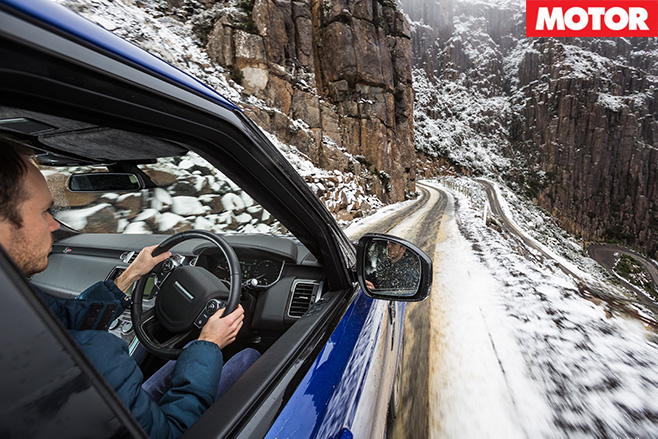
It crawls with ease across a surface you couldn’t walk on, though downhill engine braking is the only way to keep speed in check, the slightest brush of the brakes instantly causing the ABS to ineffectually grab individual wheels. Until now the SVR’s off-road abilities have been virtually irrelevant, now the safety margin they provide is welcome.
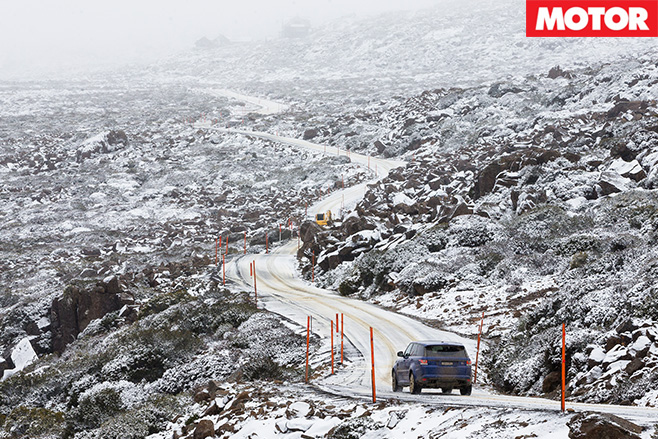
As tested, it’s also $253,280. The Range Rover Sport HSE Dynamic TDV8, with its 250kW/740Nm 4.4-litre twin-turbo V8 diesel, might not have tempted us to tackle The Sideling, but it would’ve completed every other facet of the journey in greater comfort and with considerably better fuel economy than the 18.21L/100km we averaged over almost 800km. It’s also so much cheaper than the SVR you’d have enough left over for a BMW M2 Pure for when you really wanted to attack some corners.
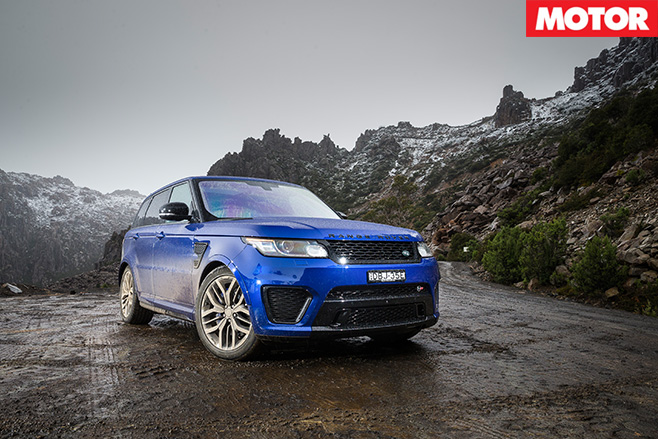
3.5 OUT OF 5 STARS
SPECS Body: 5-door, 5-seat SUV Drive: all-wheel Engines: 5000cc V8, DOHC, 32v, supercharged Bore/stroke: 92.5 x 93.0mm Compression: 9.5:1 Power: 405kW @ 6000-6500rpm Torque: 680Nm @ 3500-4000rpm Power/weight: 174kW/tonne Transmission: 8-speed automatic Weight: 2333kg Front suspension: Struts, anti-roll bar Rear suspension: Multi-links, anti-roll bar L/W/H: 4856/2019/1780mm Wheelbase: 2923mm Tracks: 1690/1685mm (f/r) Steering: electrically-assisted rack-and-pinion Front brakes: 380mm ventilated discs, 6-piston calipers Rear brakes: 365mm ventilated discs, 4-piston calipers Wheels: 21.0 x 9.5-inch (f/r) Tyres: 275/45 R21 (f/r)Continental Cross Contact Price as tested: $253,280 Pros: Awesome engine; off-road ability Cons: Expensive; SVR badge questionable


